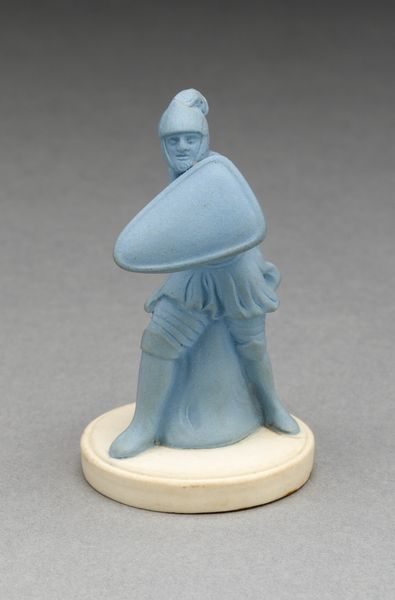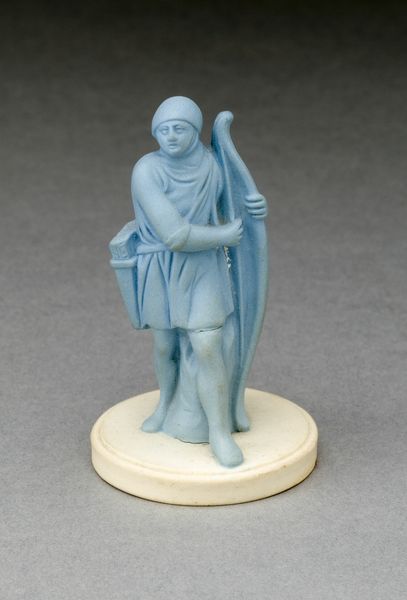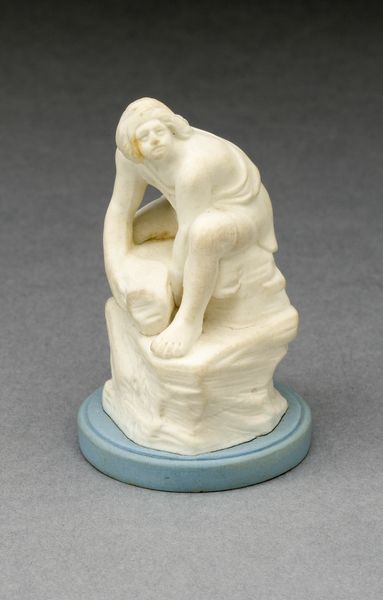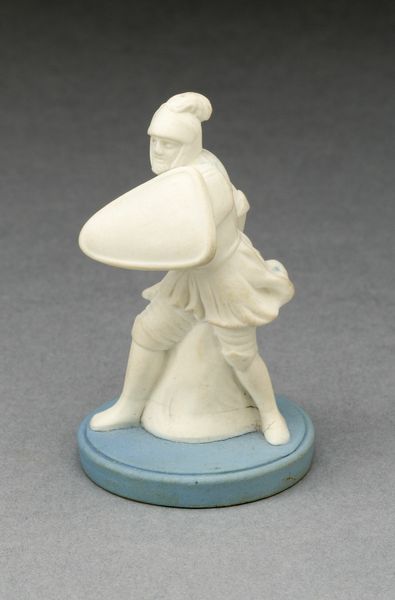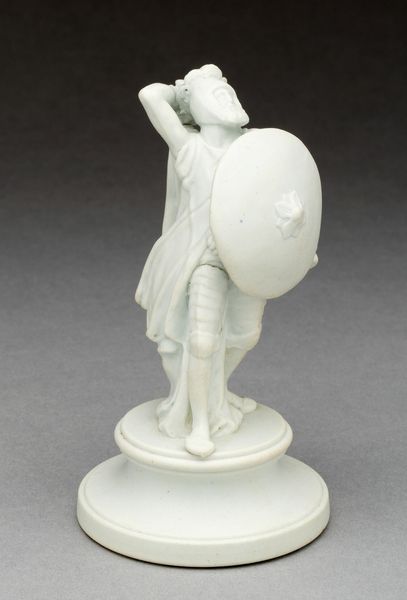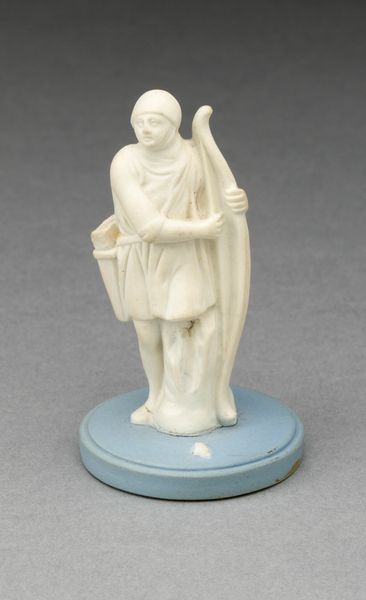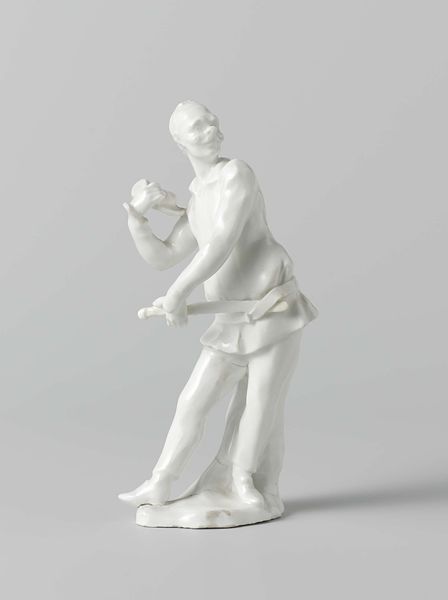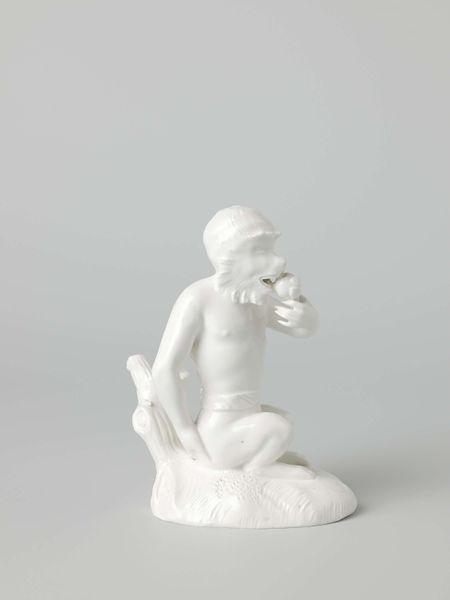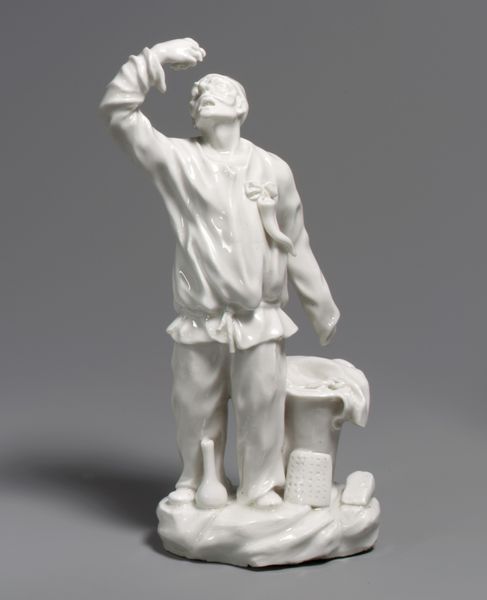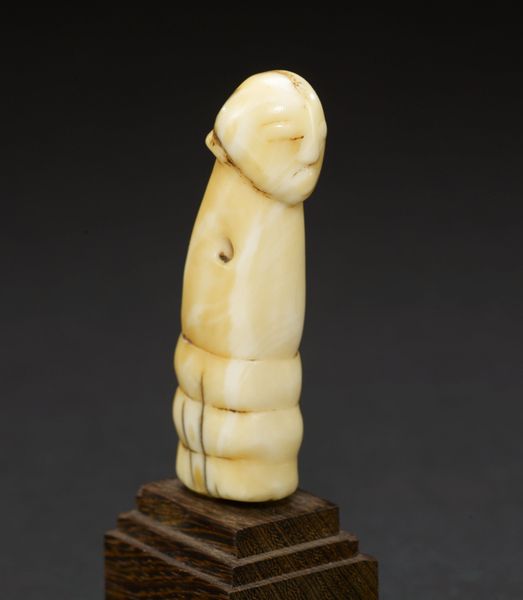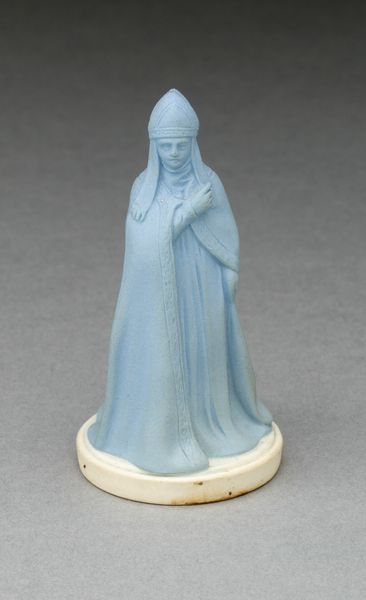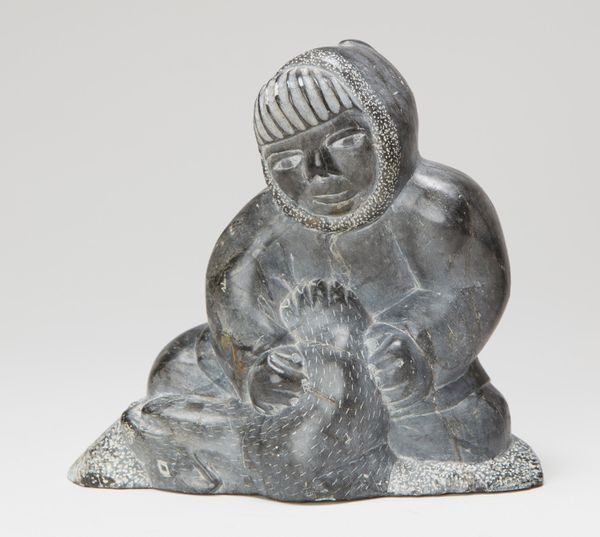
ceramic, sculpture
#
portrait
#
neoclacissism
#
war
#
ceramic
#
figuration
#
sculpture
#
decorative-art
Dimensions: 6 × 3.2 cm (2 3/8 × 1 1/4 in.)
Copyright: Public Domain
This chess piece, a pawn, was made by the Wedgwood Manufactory. Wedgwood pottery emerged in 18th-century England, and its production was a central part of the Industrial Revolution. It’s an excellent example of how a factory can bring art into everyday life through mass production. Consider the visual cues here: the pawn is a classical figure, referencing ancient Greece and Rome, cultures highly prized by the elites of Europe at the time. But the figure is made of delicate, mass-produced Jasperware. This combination shows how industry can democratize access to classical art. Wedgwood pottery was made in England at a time of burgeoning capitalism and a rapidly expanding middle class with new levels of disposable income. It filled a demand for luxury goods that were high in quality but relatively low in price. By researching company records, design books, and period advertisements, we can understand Wedgwood’s marketing strategies and target consumers. This chess piece offers a glimpse into the social and economic transformations of its time.
Comments
No comments
Be the first to comment and join the conversation on the ultimate creative platform.

